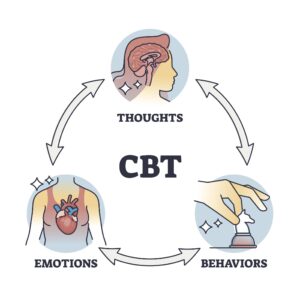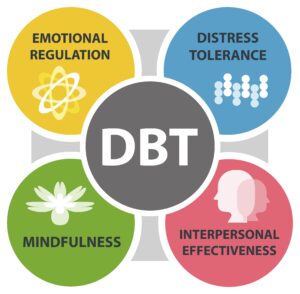The Impact of Pregnancy & Motherhood on Our Mental Health

From hormonal changes to changes to our bodies and physical and mental health, new and expecting mothers face many challenges.
“While everyone’s experiences during pregnancy and after giving birth can vary, for some, moderate to severe mental health struggles may arise,” says Lori Talbert, MSW and clinical therapist at Valera Health. “Valera’s Maternal Wellness Group provides an essential supportive community that normalizes these feelings, allowing perinatal women to feel empowered and able to parent with more competence and confidence.”

Mental Health Issues for Perinatal & Postnatal Women
Throughout pregnancy and after giving birth, a multitude of stressors may arise that can lead to maternal mental health issues and mental health disorders.
Common types of maternal mental health disorders include:
Postpartum Depression (PPD)
- PPD is a form of depression that occurs after childbirth. Factors such as hormonal changes, fatigue, increased stress and adjusting to motherhood can contribute to PPD.
Persistent Depressive Disorder (PDD)
- Also known as dysthymia, persistent depressive disorder is a mild to moderate form of chronic depression that lasts for at least two years. Although the verdict on what causes PDD is undecided, some studies have suggested a possible link with the prenatal period spurring PDD in those with a genetic predisposition to it. One study published by the National Library of Medicine found that a group of participants with dysthymia “..had higher prenatal cortisol levels, and their fetuses had lower fetal growth measures including estimated weight, femur length and abdominal circumference, as measured at the first ultrasound visit.”
Birth-Related Post-Traumatic Stress Disorder (PTSD)
- For some, traumatic birthing experiences can result in post-traumatic stress disorder. Symptoms of birth-related PTSD may include flashbacks or nightmares related to the event, insomnia, anxiety, avoidance of stimuli related to the trauma, intrusive trauma-related thoughts, hypervigilance, loss of interest in once pleasurable activities, irritability/agitation, guilt or loneliness.
Generalized Anxiety Disorder (GAD)
- While it’s common to worry before or after having a baby, key features of GAD are persistent symptoms such as extreme worry, restlessness, problems sleeping as well as physical symptoms such as a racing heartbeat or having trouble breathing. For those with pregnancy and/or postpartum related GAD, these worrying and persistent thoughts may be closely related to the pregnancy itself as well as medical related fears or other fears regarding their baby or parenting skills.
Maternal/Perinatal Obsessive-Compulsive Disorder (OCD)
- This disorder is marked by OCD symptoms that develop during the perinatal or postnatal periods. OCD is an anxiety disorder in which a person tries to manage anxiety symptoms such as intrusive thoughts or persistent fear and worry with rituals known as compulsions.
This is not an exhaustive list of all maternal mental health conditions. Other mental health challenges expecting or new mothers may face include (but are not limited to) grief related to a miscarriage or the passing of a newborn baby, postpartum mania and postpartum psychosis.

Seeking Help
Whether you identify with the maternal mental illnesses outlined in this blog post, or are otherwise having mental health struggles during this time, it’s important to let your healthcare providers know.
If you have a previous history of mental health conditions, such as depression, tell your healthcare providers—including your obstetrician-gynecologist (OB-GYN)—if you are planning on becoming pregnant, or as soon as you find out you’re pregnant so that they can help you come up with a mental health plan.
Valera Health offers a specialized program for maternal wellness that includes a dedicated care team and personalized virtual individual and group therapy options designed specifically for new or expecting mothers.
About Valera Health’s Maternal Wellness Group:
Facilitated by Lori Talbert, this virtual group is for pregnant or new moms seeking a safe space to heal and process their maternal experience and emotions while learning coping skills, relaxation techniques and communication skills. It provides an opportunity for participants to connect with and learn from others who share the same experience. Focus areas of the group include prenatal and postpartum support for anxiety and depression. Tools utilized in the Maternal Wellness Group include psychoeducation and other evidence-based interventions, and even humor to help manage the stress that arises during pregnancy, childbirth and parenting and help prevent postpartum depression. No topic is off limits.
Current Valera Health patients should reach out to their Valera Health provider(s) if they are interested in joining the Maternal Wellness Group. If you are not a current patient of Valera Health and would like to learn more about the Maternal Wellness Group, or are interested in any other Valera Health services, click here or visit www.valerahealth.com/consult or call 646-450-7748 for a free consultation with a Health Connector.
Please note that at this time, our virtual Maternal Wellness Group is only open to those residing in the state of New York, but we will be expanding our group therapy offerings to other states in the future—stay tuned!






























